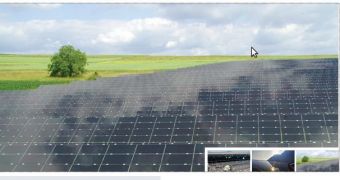The U.S. Department of the Interior (DOI) modified the initial federal plan which is meant to support the development of utility-scale solar power applied in six western states: Arizona, California, Colorado, Nevada, New Mexico, and Utah.
The modifications were operated taking into account the area's potential for exploring and expanding the benefits of green solar energy and the most significant bumps in the road which might threaten the development.
The Supplement to the Draft Programmatic Environmental Impact Statement for Solar Energy Development (Solar PEIS) has taken into consideration 285,000 acres which represent 17 sectors suitable for solar power installations from all the six named states.
Last year, the organization has received approximately 80,000 comments which have been stored and analyzed by the Bureau of Land Management (BLM).
Along with an elaborated research, the comments have proved their utility since they helped the officials choose the most appropriate regions for their future projects. In order to make the right decision, BLM counted on the help of resource managers and other agencies.
All in all, the organization managed to remove some of the areas that were on the list while also highlighting the regions with the most powerful means of developing solar energy.
At this point in time, BLM's main objective is to create the appropriate context to allow the expansion of large-scale solar-powered projects located on public land.
In order to emphasize the fact that their decision is based on realistic data, BLM described in their research the entire process which led to the selection of zones, including factors such as potential resource conflicts.
The organization's officials hope that other regions will be added on the list in the near future. Furthermore, the people behind this project have also reflected the incentives developers will receive for solar-power exploitation.
If everything goes according to plan, BLM will finish its research upon this topic, launching a Final Programmatic Environmental Impact Statement and Record of Decision.

 14 DAY TRIAL //
14 DAY TRIAL //